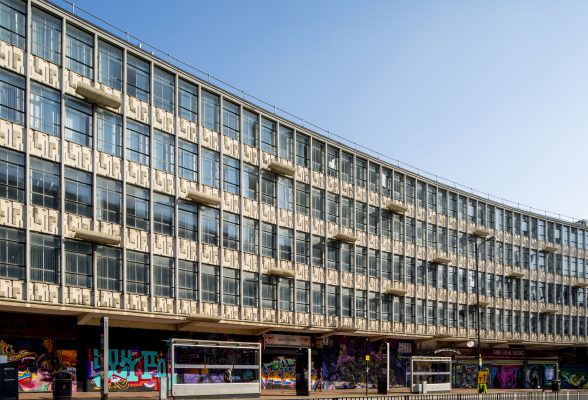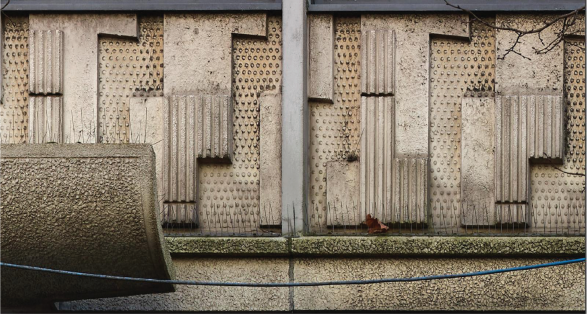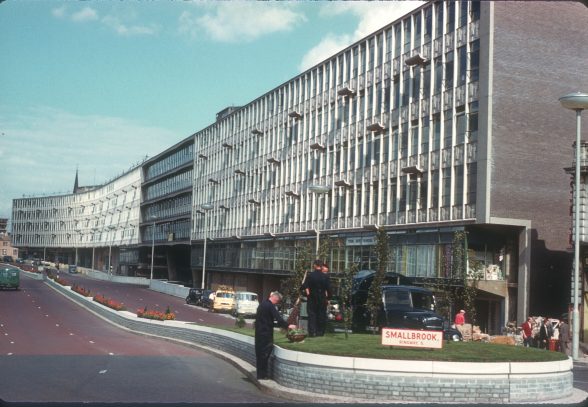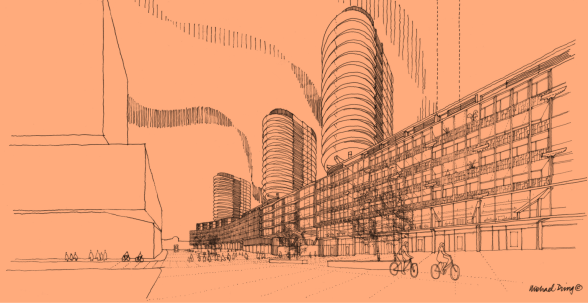This website uses cookies
This website uses cookies to enable it to function properly and to analyse how the website is used. Please click 'Close' to accept and continue using the website.



Image: Elain Harwood
Birmingham City Council’s planning committee have narrowly approved plans to demolish Smallbrook Ringway Centre, voting 7-6 in favour of redevelopment for the landmark building. The decision represents another devastating assault on the city’s post-war heritage, and follows a prolonged campaign by C20 and a coalition of local heritage, conservation, and environmental groups against the plans.
The Ringway Centre was featured in our 2023 Risk List of the top 10 buildings in the UK most under threat, while in November 2022, C20 joined Brutiful Birmingham, Zero Carbon House and Birmingham Modernist Society to present a counter-proposal, demonstrating how the existing building could be retained and expanded.

Image: David Rowan
The ribbon-like Ringway Centre was designed by James Roberts and Sydney Greenwood (1958-60) as part of the late 50’s Inner Ring Road scheme. The premier example of post-war ‘carchitecture’ in a city that truly embraced the automobile, it was described by Pevsner as “the best piece of mid-20th century urban design [in Birmingham]”.
Known for its dramatic 230m long elevation that curves along Smallbrook Queensway and sweeps over Hurst Street on great V-shaped pilotti – thought to be the longest single retail frontage in the country – it contains four storeys of office accommodation above a sheltered shopping parade at street level. The primary façade of glazed bands and precast concrete spandrels is its defining feature: decorative relief panels with a touch of Ben Nicholson, illuminated by bullhorn uplighters that nod to Le Corbusier in Chandigarh. The enormous scale means the concrete panels establish their own rhythms of light and shade, permitting any amount of brash signage without disrupting the overall grandeur. Indeed, it even acted as a stylish backdrop for a Clint Eastwood photoshoot when he visited the city in 1967.

Image: Phyllis Nicklin
The protracted battle for the site began in 2015, when plans were first submitted to part-demolish the Ringway Centre, with the addition of a 26-storey tower block. C20 strongly objected and applied to list the building, yet planning permission was granted in 2017 following Historic England’s recommendation that it did not meet the criteria for national listing. The latest plans to have been approved, by developer CEG and architects Corstorphine & Wright, will see the entire building demolished to make way for three new towers between 44 and 56 storeys, accommodating up to 1,800 residential units.
The Ringway is also currently covered by a COI (Certificate of Immunity from Listing), issued in March 2022 and valid until March 2027. C20 and the local campaigners are regrouping to ascertain if there’s any recourse against the decision.
Oli Marshall, the Society’s campaign manager, added:
“This decision represents a colossal failure of imagination, to demolish rather than renew and repurpose the landmark Ringway Centre. It’s especially frustrating given Birmingham’s incredibly rich postwar heritage – among the finest of any city in the UK, yet so much of it has been lost and is continuing to be lost. The mood in the country is changing against demolition and a disposable building culture. We need to be repurposing what we already have. It is completely at odds with Birmingham City Council’s commitment to go zero-carbon by 2030.”

Image: Mike Dring

Become a C20 member today and help save our modern design heritage.